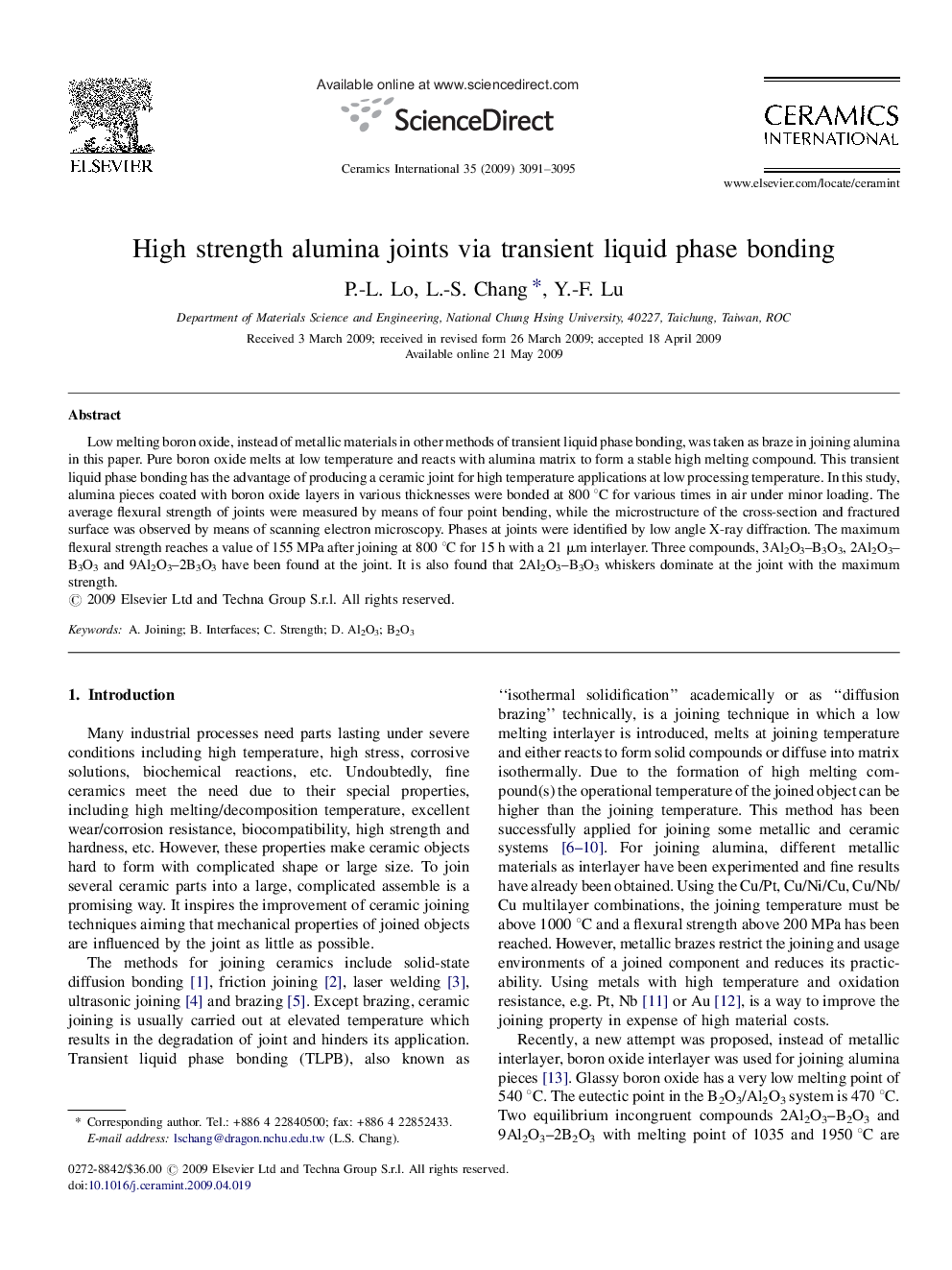| کد مقاله | کد نشریه | سال انتشار | مقاله انگلیسی | نسخه تمام متن |
|---|---|---|---|---|
| 1463289 | 989645 | 2009 | 5 صفحه PDF | دانلود رایگان |

Low melting boron oxide, instead of metallic materials in other methods of transient liquid phase bonding, was taken as braze in joining alumina in this paper. Pure boron oxide melts at low temperature and reacts with alumina matrix to form a stable high melting compound. This transient liquid phase bonding has the advantage of producing a ceramic joint for high temperature applications at low processing temperature. In this study, alumina pieces coated with boron oxide layers in various thicknesses were bonded at 800 °C for various times in air under minor loading. The average flexural strength of joints were measured by means of four point bending, while the microstructure of the cross-section and fractured surface was observed by means of scanning electron microscopy. Phases at joints were identified by low angle X-ray diffraction. The maximum flexural strength reaches a value of 155 MPa after joining at 800 °C for 15 h with a 21 μm interlayer. Three compounds, 3Al2O3–B3O3, 2Al2O3–B3O3 and 9Al2O3–2B3O3 have been found at the joint. It is also found that 2Al2O3–B3O3 whiskers dominate at the joint with the maximum strength.
Journal: Ceramics International - Volume 35, Issue 8, December 2009, Pages 3091–3095